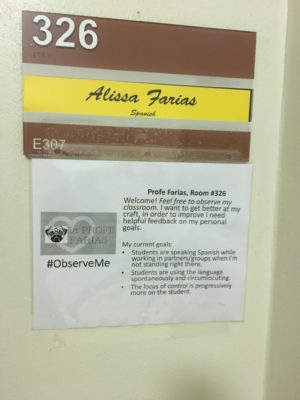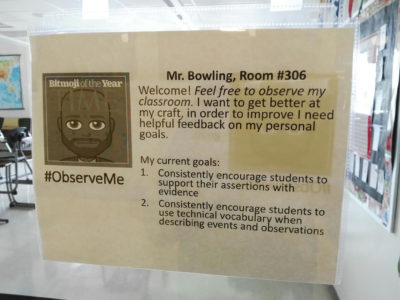I was at a meeting when news started to spread that Governor Jay Inslee had released his budget plan. Of course, the thing that grabbed most people’s attention was the significant bump in pay for teachers. I noted, however, the difficult reality of his budget that our state has not yet come to terms with: In order to achieve the services we expect from public schools, we need to secure new revenue either through additional taxes or closing of loopholes. Inslee’s proposal includes four billion new dollars to be invested in public schools. Simply put, Inslee realizes that fixing our system means we can’t just shuffle line items within the current revenue structure.
In the real world, fixing things pretty much always costs money. Sometimes it even costs money you don’t yet have.
A couple of years ago on a Sunday afternoon in March, I was sitting in my living room, grading student essays. Suddenly, a sound like a fighter jet landing in my front yard started to shake my house, and then BOOM. This:
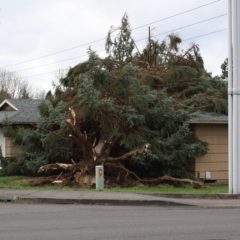
A freak spring windstorm leveled a swath of trees and structures in our neighborhood, and took an otherwise healthy (according to the arborist) 50-ft blue spruce and crashed it diagonally across the whole structure of our home. We have homeowners insurance, but between the deductible and some of what insurance didn’t cover, we didn’t have the money to fix it completely. Significant structural damage, eventual water damage from a poor patch job from the lowest-cost emergency board-up contractor, plus our roofing options being limited to the two plastic tarps I already owned and the one that the fire department donated to us to attempt to minimize water damage all made it clear that this fix was going to require something else than just making do with what we had.
Thankfully, we were able to access additional revenue, so to speak. Friends and family chipped in. I took on (yet another) side job to bring in a little cash. We sold some stuff from the garage. In the end, our house was back to normal almost a year later thanks to these additional resources (and a kind hearted roofer and generous arborist who charged us far less than they should have for work insurance couldn’t cover). The reality is that we were doing fine financially before and certainly accept criticism that we “should have” had more cash socked away for this particular breed of rainy day. The reality was that in the face of a clearly broken structure, “doing the best with what we had” wasn’t going to cut it. We will forever appreciate the people who were willing to give services, muscle, or money to help us fix our home.
I for one greatly appreciate Inslee for aiming so high and being realistic about what it will take to make progress toward strengthening public schools. New tests won’t do it. New requirements won’t do it. Furthering our love affair with accountability won’t do it. Simply demanding teachers to “do better with what they have” is not going to do it either. Fixes, in the real world, often require an investment beyond what we think we can absorb, and sometimes that investment requires more resources being added to the system.
And as for that meeting where word of the Governor’s budget was making the rounds? The reaction of teachers was positive and it had far less to do with more pay than it did with what our Governor’s budget was communicating: He was saying, pure and simple, I am willing to invest in you.
That’s a good feeling.

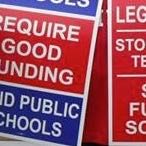
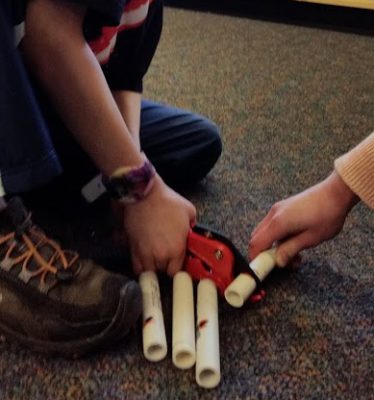 oy was still crushed. He had every reason to be. He had toiled long and hard cutting all the PVC pipe pieces for the original design—and for a small kid, it was laborious work. Clearly, he felt like all his effort was for nothing.
oy was still crushed. He had every reason to be. He had toiled long and hard cutting all the PVC pipe pieces for the original design—and for a small kid, it was laborious work. Clearly, he felt like all his effort was for nothing.
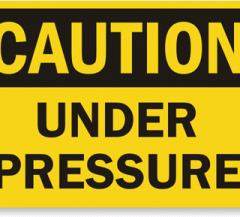

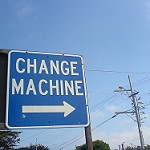

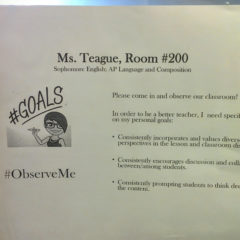
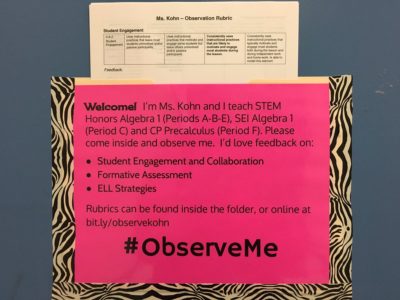
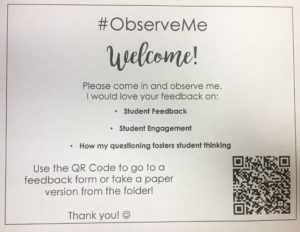 It forces me to have a growth mindset. If this sign is on my door, I am telling the world that I want to grow. I am inviting anyone to come in and comment on my instruct. Yeah, that’s a little scary. But it’s a healthy risk that models vulnerability and openness to others. Who could pop in? A visitor. A parent. The librarian. Another teacher on planning period. I’m both thrilled and terrified at the possibilities. The #ObserveMe challenge reminds us that teaching is relational and we need all types of perspectives to help us grow. This model is based on trust. By opening myself up to the community, I am making them a part of my learning process and saying that I value their voice in my growth.
It forces me to have a growth mindset. If this sign is on my door, I am telling the world that I want to grow. I am inviting anyone to come in and comment on my instruct. Yeah, that’s a little scary. But it’s a healthy risk that models vulnerability and openness to others. Who could pop in? A visitor. A parent. The librarian. Another teacher on planning period. I’m both thrilled and terrified at the possibilities. The #ObserveMe challenge reminds us that teaching is relational and we need all types of perspectives to help us grow. This model is based on trust. By opening myself up to the community, I am making them a part of my learning process and saying that I value their voice in my growth.